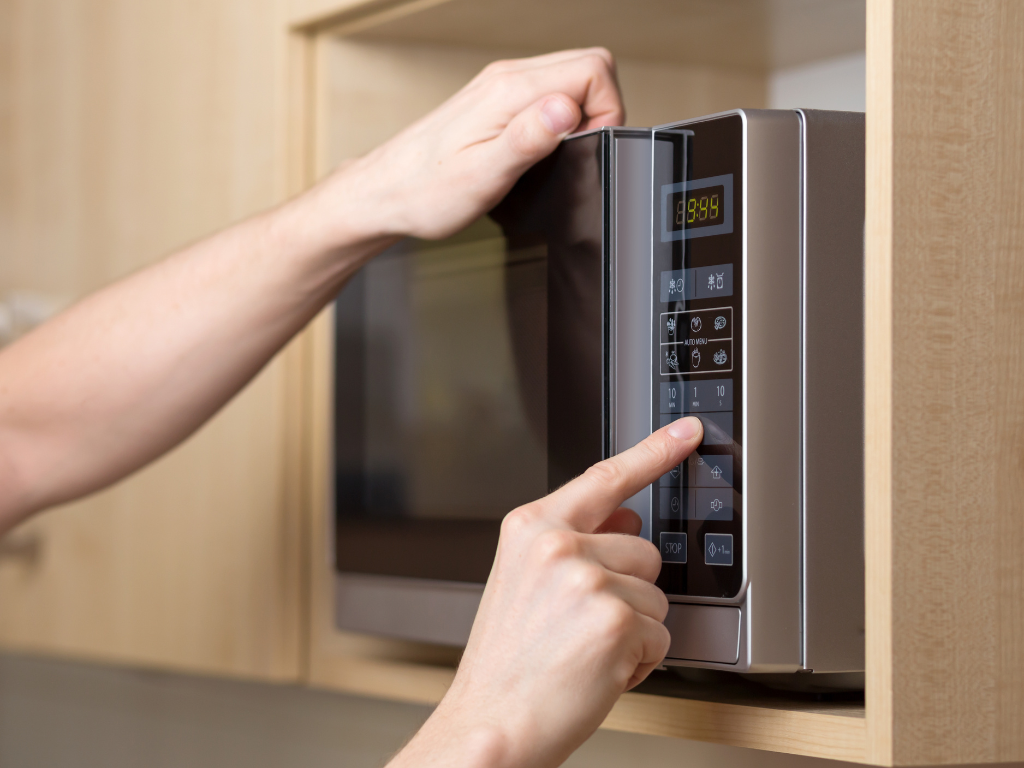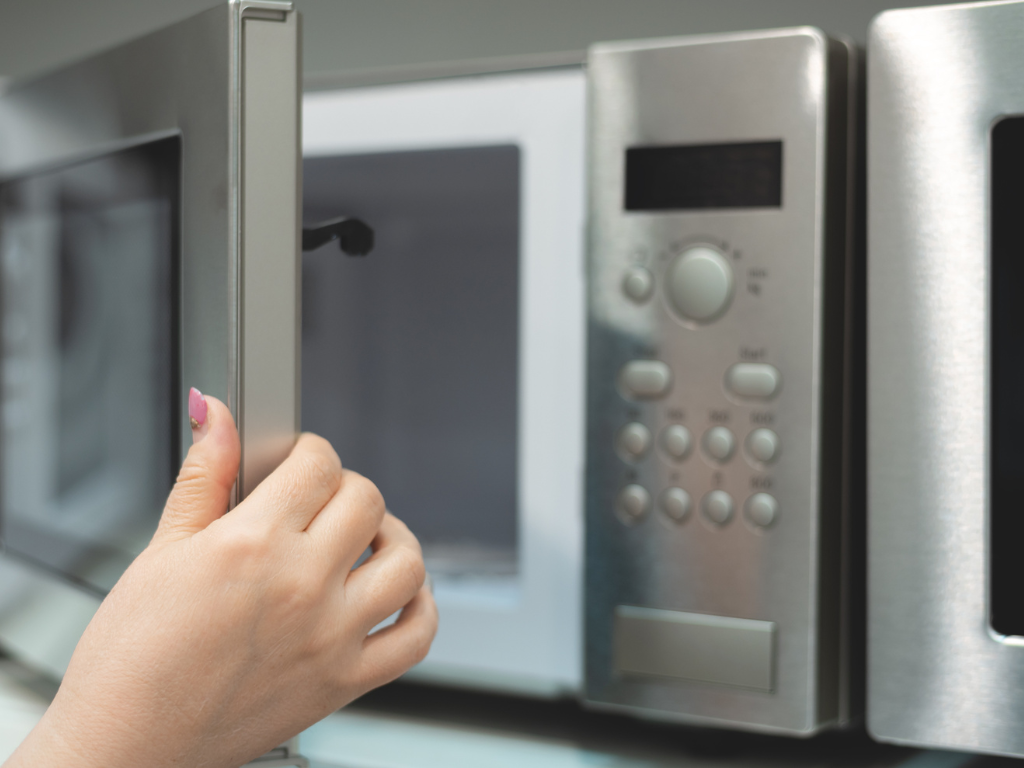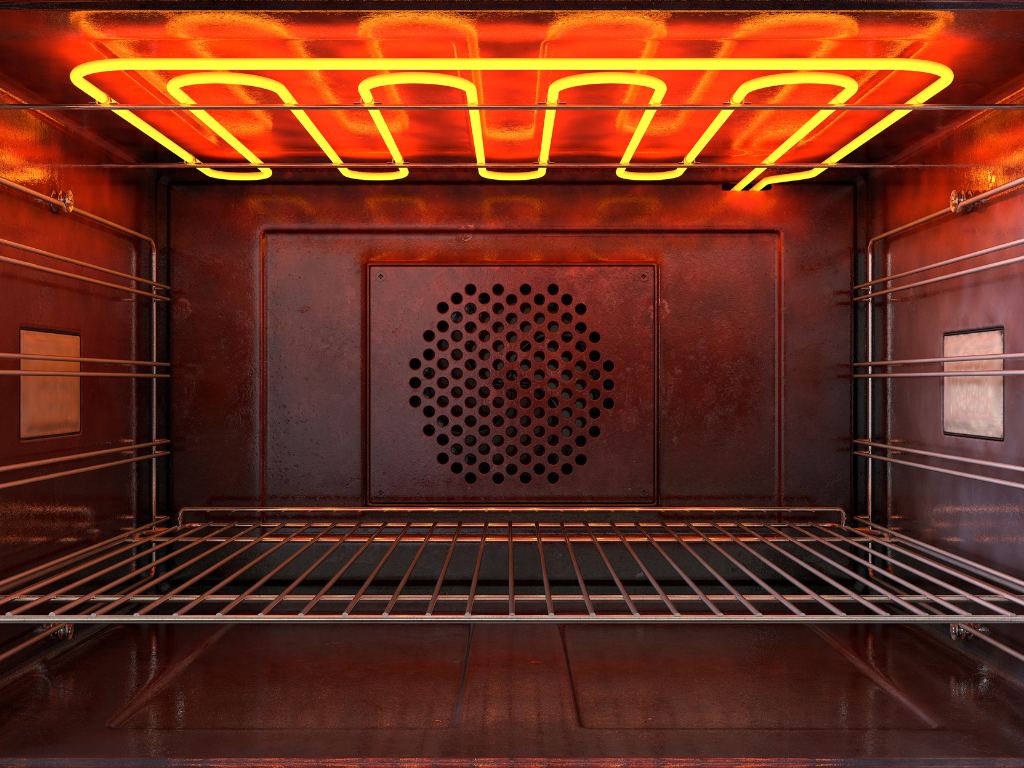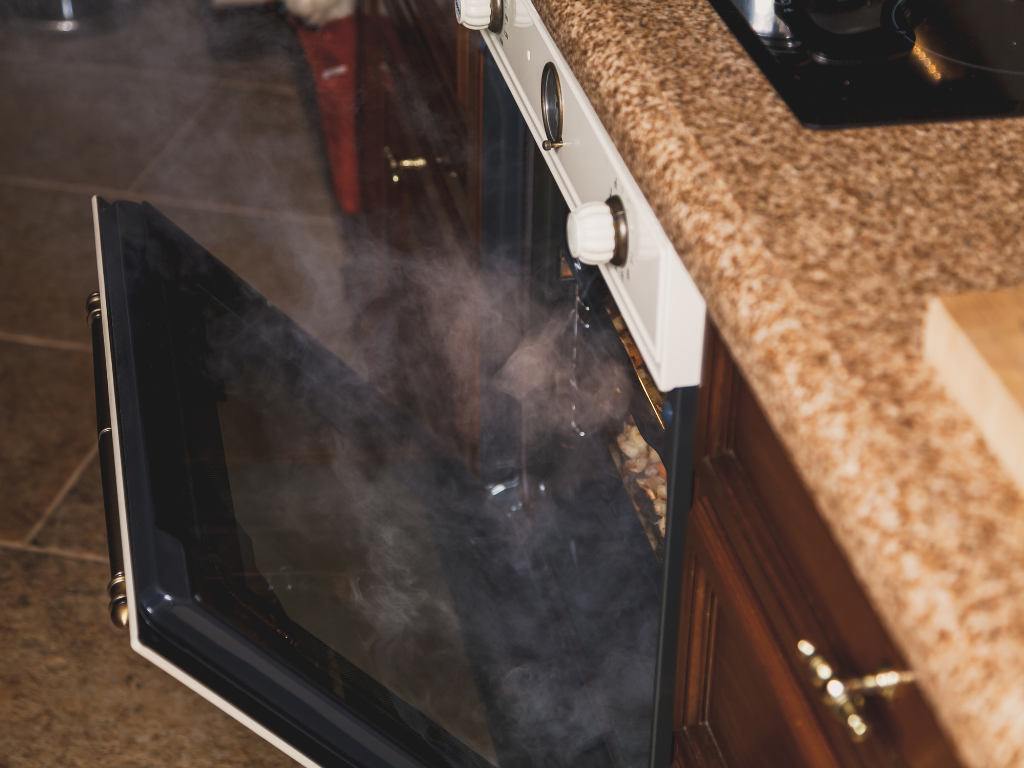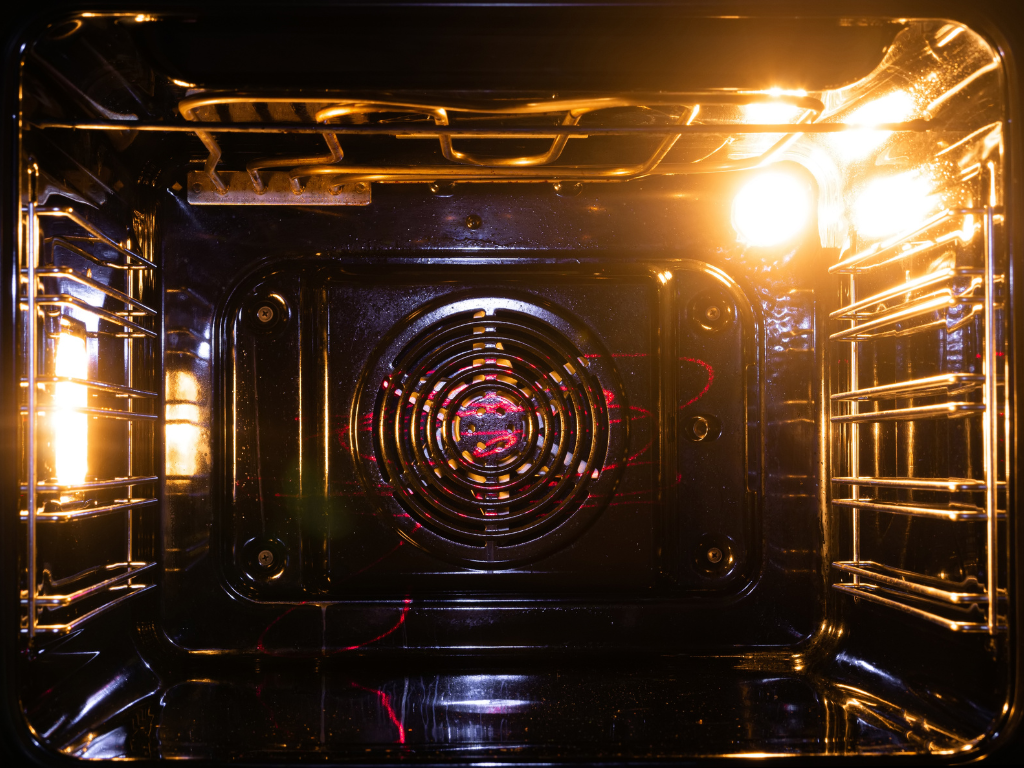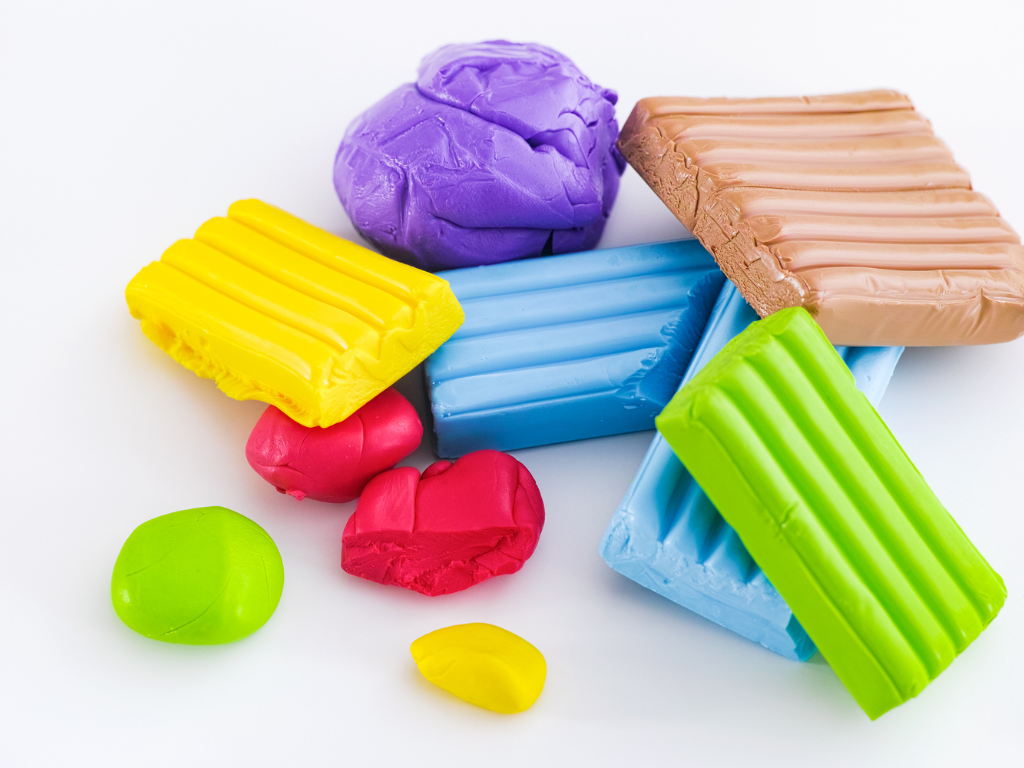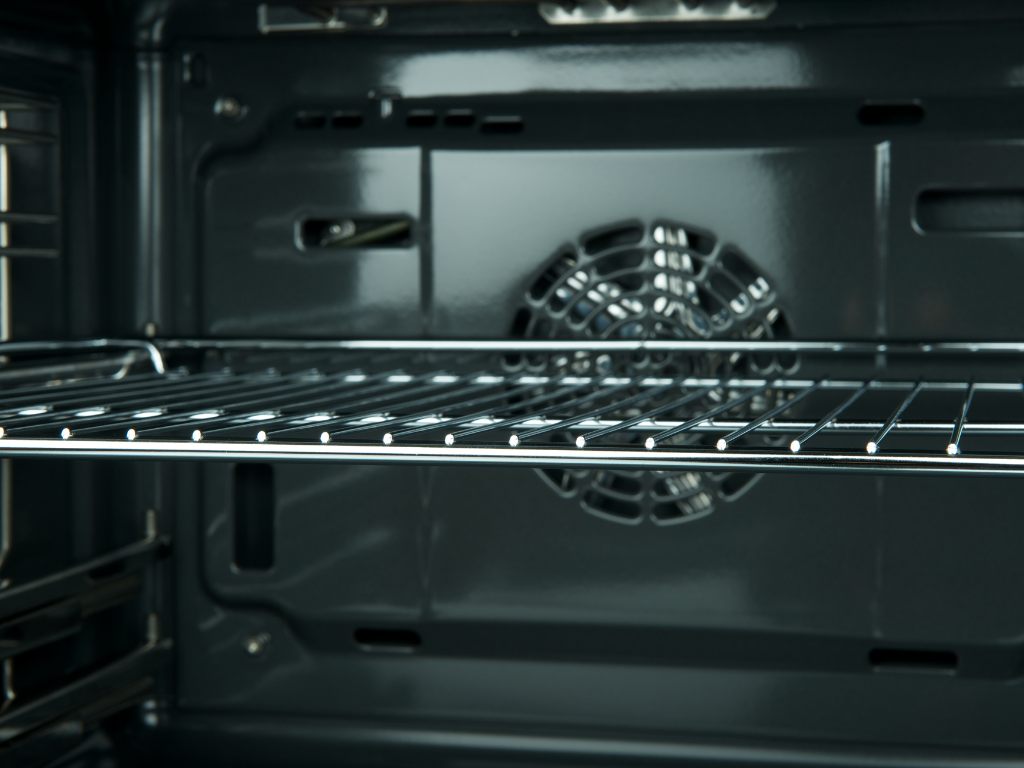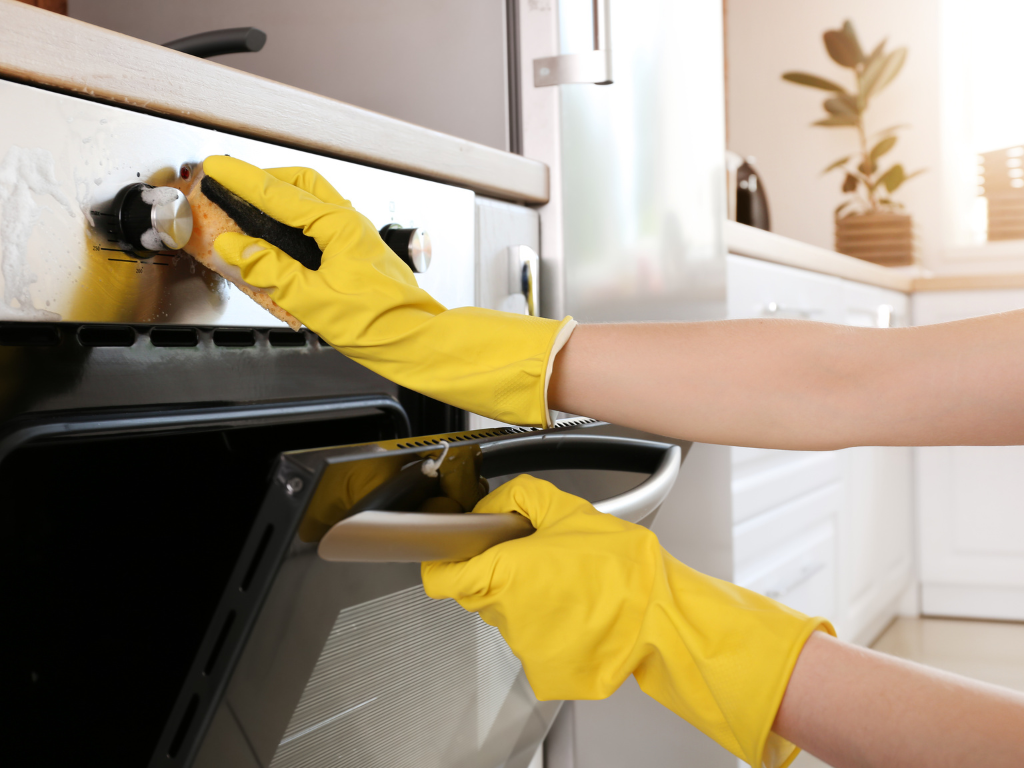Key Takeaways:
- Turning off a self-cleaning oven early can lead to a partially cleaned oven and potential damage to the appliance. It is important to let the cycle complete, which can take up to several hours depending on the model and level of dirtiness.
- Aborting a self-cleaning cycle can also result in the oven locking up and becoming stuck. This can pose a potential safety hazard as the oven door will remain locked until the appliance cools down, which can take several hours.
- When planning to use your self-cleaning oven, prepare the area around the appliance by removing flammable objects, venting the kitchen, and pre-cleaning the oven. Always make sure to follow the manufacturer’s instructions and never leave a self-cleaning oven unattended.
Want to avoid harm to your oven while self-cleaning? Fearful of the potential damage caused by interruption of the process? Read on! We’ve got simple tips and tricks to help you turn off your self-cleaning oven with no fuss. Find out what happens when you switch off self-cleaning oven early and make an informed decision!
Introduction
When using a self-cleaning feature, it is essential to ensure you complete the cycle to avoid potential hazards and damage. If you turn off a self-cleaning oven early, the control panel may display an error message, and the oven will begin to cool down. However, not allowing the oven to cool down completely before opening the door can damage the oven’s inner walls, as they may still be superheated. Additionally, caked-on food soils may still be present and produce an unpleasant odor. To avoid these complications and maintain your oven’s regular maintenance, it is advisable to complete the self-cleaning cycle.
It is crucial to keep in mind that the average cycle duration for a self-cleaning oven is around three to four hours. The oven’s automatic lock and auto-locking mechanism will engage at a certain temperature range, ensuring safety and preventing accidental burns. Moreover, to avoid ventilation issues during the self-cleaning cycle, be sure to remove any flammable objects from near the oven.
If you are unsure how to operate the self-cleaning function or cancel the cycle, refer to the oven’s user manual or locate the cancel/clear button. In case of an emergency or unexpected guest arrival, it is best to plan ahead and avoid starting the self-cleaning cycle.
To ensure everyone’s safety and prevent kitchen-related fires or carbon monoxide exposure, it is crucial to maintain proper ventilation when cooking or using the oven. Regularly pre-clean the oven to avoid the buildup of caked-on debris, and never leave the oven on overnight.
What is a Self-Cleaning Oven?
A self-cleaning oven is an electric oven that uses high temperatures to burn off food debris and grease without the need for chemicals or scrubbing. The oven has a built-in cycle that engages a countdown timer and sets the oven to a very high temperature for several hours. During the cycle, all food residue in the oven is turned into ash. The oven automatically shuts off when the cycle is finished and goes into standby mode to cool down. Kitchen ventilation is recommended during the cleaning process to alleviate any smoke or odor produced. Overnight self-cleaning is popular, but the cancel button can be used to disengage the cycle. It is important to let the oven cool down before opening it.
A unique aspect of a self-cleaning oven is that it reaches a very high temperature that can result in burnout of the oven broilers and elements. It is recommended to remove any paper, aluminum, or plastic objects from the oven before starting the cycle. Additionally, the oven should not be used for cooking before or after the cycle until the oven has cooled down.
According to the National Fire Protection Association, cooking-related home fires are the leading cause of house fires in the United States. In fact, in 2018, these fires resulted in over 27,000 civilian injuries and $1.2 billion in property damage. It is important to properly maintain and use a self-cleaning oven to reduce the risk of starting a fire.
How Does a Self-Cleaning Oven Work?
Self-cleaning ovens utilize a special function that eliminates baked-on food and debris from the interior of the oven. During the self-cleaning cycle, electric ovens raise the cooking temperature to an extremely high level, typically around 900 degrees Fahrenheit. This high temperature causes any residue to burn into ash, which can be easily wiped away once the cycle is complete.
The key aspect of self-cleaning ovens is time and heat. The oven’s cycle typically lasts between 2-4 hours depending on the model and severity of residue build-up. It is essential to monitor your electric oven during this process, as turning off or stopping a self-cleaning cycle prematurely can damage both your oven and potentially harm yourself.
It’s important to note that even after running a cleaning cycle, some residue may still remain. To avoid this issue, clean up spills as they occur and use vinegar or baking soda solutions frequently to remove any existing stains or baked-on carbon from your oven.
Pro Tip: When using your self-cleaning feature on an electric oven, ensure there are no paper plates, plastic containers, or foil pieces left inside the oven cavity. These items can melt or combust due to high temperatures, causing permanent damage not covered under warranty.
Duration of Self-Cleaning Cycle
Self-cleaning ovens are an excellent feature that eliminates the need for manual cleaning. However, it is essential to understand the Duration of Self-Cleaning Cycle to avoid any complications.
A table representing the duration of a self-cleaning cycle is as follows:
| Oven Type | Cleaning Time |
|---|---|
| Gas | 2-3 hours |
| Electric | 2-4 hours |
| Dual-Fuel | 2-4 hours |
It is crucial to note that turning off a self-cleaning oven early may cause issues like smoke and burning smell.
To avoid such problems, keep in mind the following suggestions:
- Ensure adequate ventilation during the oven’s operation
- Remove any baked-on carbon before starting the process.
- It is safe to eat food cooked in a new oven after one use.
- Do not put paper plates in the oven as they can easily catch fire at high temperatures.
When Should You Use a Self-Cleaning Oven?
When to Utilize a Self-Cleaning Oven?
A self-cleaning oven is appropriate when it has built-up grime and carbon development. The self-cleaning cycle heightens the oven’s temperature to a point where the residue transforms into ash, the ash afterward can quickly be wiped off with a damp towel. It is advised not to use the self-cleaning function if the oven is not exceptionally dirty as it may result in damage to the oven’s internal parts.
Self-cleaning ovens eliminate the need to scrub it manually, however, be cautious when operating it. Always follow the manufacturer’s instructions, avoid touching the oven when it’s hot and ensure ventilation is sufficient. In case you turn off the self-cleaning cycle early, the oven needs cleaning as usual, but before placing it back into use, make sure it is entirely cooled down.
It is recommended to avoid running a self-cleaning function right before or during cooking food. Also, never leave the house when the self-cleaning cycle is in progress. Moreover, oven-safe cookware or aluminum foil is safe during self-cleaning because these elements withstand high temperatures. Still, it is not safe to put plastic or paper in the oven.
When using a self-cleaning oven, some critical factors should be considered:
- Make sure it’s safe to eat food cooked in a new oven.
- The warmth setting on an oven.
- How to turn off the self-cleaning.
- Additionally, how to remove baked-on carbon from an oven, how to calibrate a Frigidaire oven, and how to cure powder coat without an oven should also be kept in mind.
How to Prepare Your Oven for Self-Cleaning
If you’re wondering how to get your oven ready for self-cleaning, here’s what you need to know. First, remove any food debris or spills from the oven interior. Then, check if the oven racks are safe to leave inside. If they are, leave them in the oven. Next, make sure to remove any utensils, aluminum foil, or paper plates from inside the oven.
To prepare your oven for self-cleaning, follow these three steps:
- Remove any large food debris or spills from the oven interior.
- If your oven racks are safe to leave inside, keep them in the oven. Otherwise, remove them and clean them separately.
- Take out any utensils, aluminum foil, or paper plates that might be inside the oven.
It’s also important to note that during the self-cleaning cycle, it’s not safe to eat food that’s been cooked in the oven. Additionally, the oven door will lock during self-cleaning and remain locked until the cycle is complete.
Finally, it’s worth mentioning that turning off the self-cleaning oven early could lead to unsatisfactory cleaning results. In fact, according to Consumer Reports, interrupting the cleaning cycle can cause your oven to become permanently damaged.
Note: According to Consumer Reports, interrupting the cleaning cycle can cause permanent oven damage.
Plan Your Day
Managing Your Time While Preparing for Self-Cleaning Oven
Preparing your oven for self-cleaning cycle can be time-consuming, especially if you haven’t done it before. Here are some steps you can follow to make the process smoother and quicker.
- Check your calendar: Make sure you have enough time to complete the whole process, including the pre-cleaning preparation and post-cleaning cool-off period.
- Account for unforeseen delays: Keep in mind that sometimes unexpected things could happen, such as power outages or oven parts breaking down. Have a backup plan or an alternative schedule in case this happens.
- Assemble cleaning supplies: You’ll need gloves, protective goggles, scrubbing pads, baking soda solution, and cleaning spray as well as proper ventilation.
- Clear space around the oven: Move any flammable objects away from the oven to prevent a fire hazard during self-cleaning.
- Clean up stains and debris: Remove any baked-on carbon or food residues that may interfere with the oven’s performance mid-cycle or damage its heating element.
If you have never used your oven before or if it has a specific setting like sabbath mode, read the instructions and safety warnings in the user manual before you proceed with self-cleaning to avoid damaging your appliance or posing a risk of electrocution or gas leaks.
Before operating your self-cleaning cycle also consider other scenarios like what to do if the cooling fan is on after it is complete or what happens if you turn off self-cleaning oven early while it is still hot. These options will help extend the life of your appliance by preventing further wear and tear.
One more suggestion would be to monitor your electricity consumption by turning off pilot lights when not cooking or switched off and avoiding leaving ovens unattended when there are young children around. Taking these small precautions can lead to healthier habits and fewer accidents in the kitchen over time.
Move Flammable Objects Away from the Oven
It is essential to take precautions when using the oven, especially regarding flammable objects. Failure to do so can cause a fire, leading to significant property damage and injuries.
To avoid this scenario, it is crucial to maintain distance between the oven and any flammable objects. Here’s how you can move flammable objects away from the oven safely:
- Inspect the area near the oven for any combustible items.
- Remove any flammable materials such as curtains, papers or plastics that could catch fire easily.
- Avoid placing food containers made of plastic or other flammable materials on the stove-top or inside the oven.
- Never store highly flammable liquids near the oven.
- Maintain a safe clearance zone at least 3 feet away from the range.
- Frequently clean your kitchen appliances, including your oven, to minimize cleanliness risks posed by baked-on carbon or grease build-up inside your appliance.
It is always good practice to never leave your hot stove unattended while cooking and turn it off after using it.
If you have a new oven, it may produce fumes that are potentially toxic if inhaled at higher levels.
A similar case happened with Susan of Washington who had left her hot mitts hanging over her stove and accidentally turned on one burner. She was quick enough to switch them off before they catch-fire but not fast enough to prevent some odour.
Vent Your Kitchen
Proper ventilation is essential while working in the kitchen, to ensure any odor or gas doesn’t build up. Always open the windows and use exhaust fans while cooking as it can cause indoor pollution and affect air quality.
Using the self-cleaning feature on an oven is a popular method of maintaining a hygiene routine. However, it’s crucial to be aware that using this option on a new appliance could result in toxic fumes. Hence, it’s better to run a test before cooking food in the oven.
Additionally, leaving paper plates or plastic in the oven can lead to accidents causing harm or damage to either the user or appliance respectively. Moreover, putting oil into an oven can create some safety hazards leading to burns and fires.
It’s important to know how an appliance works and what measures one should adopt for proper usage at home to avoid fire-related accidents. With this knowledge, one could ensure that their appliances function optimally for their longevity and user safety.
Preclean the Oven
Maintaining a clean oven is crucial to ensure that the appliance performs efficiently and safely. A well-maintained oven not only enhances the kitchen’s aesthetic appeal but also prevents undesirable outcomes such as fire hazards, uneven cooking, and unpleasant odors.
Below is a five-step guide to thoroughly clean your oven:
- Remove oven racks: Start by removing any clutter in the oven, including racks and other removable parts. If you have spilled any food or liquids on these parts, set them aside for cleaning. The simplest way to clean the racks is by using dishwashing liquid and warm water.
- Scrape off debris: Next, use a stiff brush or scraper to remove any debris, burnt-on food particles, crumbs, or anything that may have stuck to the oven walls and bottom. Be careful not to use abrasive sponges or harsh chemicals that could damage the enamel of your oven.
- Clean with baking soda: Baking soda does miracles when it comes to cleaning ovens. Mix 1/2 cup baking soda with 3 tablespoons of water until forming a paste consistency. Spread it all over your oven interior, but avoid applying this mixture onto heating elements or light bulbs inside your stove since it will affect their functionality. Leave it overnight if possible; otherwise, let it sit for at least an hour before scrubbing off with a damp cloth or sponge.
- Rinse with vinegar: To remove any leftover residue in the oven after scrubbing away dirt with baking soda, use white vinegar. Lightly mist all interior surfaces with vinegar using a spray bottle, this will neutralize residual alkalinity from the previous step and whisk away any grease spots left unaddressed previously but attractively highlight missed spots during Cleaning Oven phase again highlighted by its original drippings.
- Wipe down: After spraying vinegar, wipe the oven’s interior parts with a clean cloth or sponge until it looks clean and shiny again. Check if the racks are clean and dried too, then return them to their rightful place in your oven.
While cleaning your oven is essential, keep an eye on potential hazards that could arise from using it. For instance, always ensure that you turn off your self-cleaning oven cycle early since there is a risk of overheating leading to melting of important components like heating elements or damaging electrical parts. Always read manufacturer instructions provided before beginning appliance use.
Pro Tip: To prevent stubborn stains from settling on the oven walls and floor, avoid using aluminum foil or baking sheets as liners since these typically can leave permanent marks onto glass or stainless steel interiors used to cook your food. Clean the liner if possible after each use but remove sticky excess material (such as cheese) using a scraper rather than harsh detergents never recommended for your sparkling new Oven.
Can You Turn Off the Self-Cleaning Oven Early?
If you need to stop the self-cleaning cycle of your oven early, it depends on how far along the cycle is. If you’re in the preheating phase, it’s generally safe to turn off the oven manually. However, if you’re in the high-heat cleaning phase, it’s best to let the cycle finish entirely.
Turning off a self-cleaning oven early can prevent it from operating as it should and may even require a repair. In addition, interrupting the self-cleaning cycle could be dangerous, as the oven will be hot and the door will remain locked until it cools down. For safety reasons, it’s always better to wait until the cycle is finished.
Press the Cancel or Clear Button
To stop the self-cleaning process of an oven before its cycle is completed, press the cancel or clear button. Once clicked, wait for the oven to cool down naturally. Do not submerge it in cold water or open it immediately to avoid any accidents or damage.
Pressing the cancel or clear button halts the cleaning cycle of high temperatures and burning off food residue by turning off the heating elements. The process may take several hours, depending on how dirty your oven was. Canceling early could lead to poor cleaning results and cause smoke buildup due to unburned residue.
It is crucial to understand what a self-cleaning oven does before using it. It’s best not to cook food during a self-cleaning cycle as it can emit fumes that could be harmful and ruin your meal’s taste. Never use aluminum foil, paper plates, plastic cookware, or wooden utensils in them as they may melt or ignite.
In summary, stopping a self-cleaning oven cycle prematurely could harm you and create poor cleaning results. Bosch has confirmed that plastics used should have a “Stove Top Safe” designation to assure compatibility with ovens and microwave ovens when warmer setting engaged at 125° F (52°C).
Why the Oven Door is Locked After Self-Cleaning
After completing the self-cleaning cycle, the oven door is locked to prevent opening until the temperature inside has cooled down to a safe level. This is because temperatures in self-cleaning ovens can reach 900°F and are designed to burn off any food residues without manual cleaning. The door lock stays on until it is safe to open. It can take anywhere from 30 minutes to an hour for this process to complete, depending on the oven model.
Turning off a self-cleaning oven early can cause safety issues, such as leaving burnt food residues that continue to heat up even after turning the oven off. Doing so may also make it more difficult to clean the oven manually later on or may damage internal components of the appliance if it was not intended to be stopped before completion of its cycle.
If you try canceling a self-cleaning oven during its cycle, you might need to wait before opening the door and cancelling for several reasons. One reason is that sudden changes in temperature can cause glass doors of ovens and windows and other cool surfaces nearby in some instances could get damaged by stray thermal load across them. Another reason is that when turning off a self-cleaning oven mid-cycle, it can take time for steam and smoke buildup caused by charring food residues or grease accumulation during cooking or baking processes to clear out of your kitchen.
To ensure safe cooking conditions and avoid damaging your appliance when cleaning it, you should only use approved cleaning methods designated by your owner’s manual. Most often these include water and mild soap solutions or chemical cleaners designed for ovens.
Are Self-Cleaning Ovens Safe?
Self-cleaning ovens use high temperatures to burn off debris and grease, but this process can introduce health risks as it emits harmful chemicals. Moreover, if the oven is turned off early, some debris may not be completely eliminated, rendering the cleaning process ineffective. Additionally, when using the self-cleaning feature, it is important to remove any remaining debris from the oven and avoid placing paper plates or plastic in it.
Avoid leaving a self-cleaning oven unattended and ensure that the oven is adequately ventilated during and after cleaning. A pro tip is to always consult the oven manual for specific instructions on how to operate and clean your oven safely.
Potential Hazards of a Self-Cleaning Oven
Self-cleaning ovens are a great convenience, but they come with potential hazards. High temperatures that can reach up to 900°F during the cleaning cycle can release toxic fumes from burnt-on residue and cleaning agents in the oven.
There are three main hazards to be aware of when it comes to self-cleaning ovens:
- Toxic fumes – The self-cleaning cycle releases toxic fumes into the air, which can be harmful if inhaled.
- Fire hazard – The high temperature during self-cleaning cycle can ignite any baked-on food in the oven, leading to a fire.
- Oven damage – The high temperature may cause damage to the oven’s heating element or other components if it runs for too long or does not cancel correctly.
It’s important to follow safety precautions closely when using a self-cleaning oven. Never leave your oven unattended during the cleaning process and don’t attempt to cancel or interrupt the cycle before it has ended. Read your owner’s manual carefully before operating your oven.
In one reported incident, an individual cancelled their self-cleaning cycle early and manually removed some debris from their oven, leading to complete system failure and costly repairs .. It is essential to let the entire cleaning cycle run its course without interruption or cancellation.
Emission of Carbon Monoxide
When an oven is in use, it produces a colorless and odorless gas called carbon monoxide (CO), which is harmful to humans. Although the amount of CO produced depends on the type of oven, its age, and length of operation; levels above 9 parts per million (ppm) indicate potential danger.
If a self-cleaning oven’s cycle is stopped early, it can lead to premature cooling that may result in incomplete combustion of dirt and carbon deposits producing more CO gases. This phenomenon could be fatal when ingested by the human body.
Turning off an oven’s self-cleaning cycle before completion could pose safety risks. It’s essential to allow ample time for the cleaning process to complete and release combustible gases safely. Additionally, one should avoid opening the door while in operation as this can expose you to dangerous fumes. Always have windows open or ventilate appropriately during and after using your oven.
It’s equally important that homeowners frequently check their ovens’ CO emissions levels and address any potential damages immediately if they sense something is not operating as intended.
As reported by the Fire Department members in Vacaville, California, a newly installed wall oven was suspected of causing health complications among residents due to its toxic emission level being higher than average (80 ppm). The owners had recently housed a Thanksgiving party where food was cooked for a large group in their new oven. Eight members were hospitalized with complaints such as nausea, headaches, continuous vomiting, and flu-like symptoms inhaling poisonous gas from their modern appliance.
Can You Run a Self-Cleaning Cycle Overnight?
Running a Self-Cleaning Cycle Overnight for Your Oven
If you’re wondering whether you can run a self-cleaning cycle overnight for your oven, the answer is most likely yes. However, there are certain steps you need to follow to ensure that everything goes according to plan and that you do it safely. Here is a 4-step guide to follow:
- Before running a self-cleaning cycle, remove all oven racks, pans, and other items from the oven.
- Turn on the self-cleaning cycle and allow it to run for the recommended time, typically 2-4 hours.
- Keep the area around the oven well-ventilated and ensure that no flammable items are nearby.
- After the cleaning cycle is finished and the oven has cooled down completely, wipe any remaining ash or debris from inside the oven using a damp cloth.
It is important to note that running a self-cleaning cycle overnight can pose some risks, such as the possibility of fire or overheating. Therefore, it is essential to follow the manufacturer’s instructions carefully and take all necessary precautions to ensure that the process is done safely.
One unique detail to keep in mind is that leaving the oven on a “warm” setting overnight is not recommended, as it can also be a fire hazard.
A true fact to share is that different oven manufacturers have different recommended cleaning cycles, with some using steam cleaning technology instead of traditional high heat self-cleaning methods. (Source: Reviewed.com)
Risks of Running a Self-Cleaning Oven Overnight
Running a self-cleaning cycle overnight poses several potential hazards. Firstly, leaving an oven on unattended for an extended period can increase the risk of a fire breaking out. Secondly, despite the oven’s high-temperature cleaning cycle, it can still emit harmful substances such as carbon monoxide that could pose health risks to those present in the house. Thirdly, because of overuse and hiccups in mechanisms such as its heating elements or thermostat, the oven may suffer damage if left to run for an extended period.
Furthermore, turning off a self-cleaning oven before its cycle completes is not recommended since the process can generate lots of heat that needs time to dissipate; stopping it early may leave your food susceptible to burning. There’s also a chance that interrupting the self-cleaning cycle can disable some vital components of your kitchen appliance, leading to potentially costly repairs.
It’s worth noting that one should never use harsh chemicals or other reactive substances when attempting to clean themselves on their own. Toxic fumes might be released by combining cleaning solutions which could have unpredictable effects. Also, materials like paper and plastic shouldn’t be placed inside the oven either because they will burn and produce smoke.
Lastly, there was a tragic incident involving a self-cleaning oven in Arizona in 2016 when two people were found dead inside an apartment from carbon monoxide poisoning after allegedly running their self-cleaning feature overnight with windows closed.
Conclusion
An early shut off during the self-cleaning cycle of an oven can cause it to not fully clean certain areas. This can result in uneven cleaning or residue remaining in the oven. It is important to allow the oven to complete the full cleaning cycle.
Furthermore, it is not safe to eat food cooked in a new oven until any potential manufacturing residue has been burned off during the first use. Make sure to follow the proper procedures for self-cleaning and consult your oven manual for specific instructions on how to cancel the self-cleaning process.
Some Facts About What Happens If You Turn Off Self-Cleaning Oven Early:
- ✅ Turning off your self-cleaning oven early can result in a dirty and smelly oven. (Source: Bob Vila)
- ✅ Interrupting the self-cleaning cycle can cause damage to the oven’s components. (Source: Sears PartsDirect)
- ✅ It’s recommended to let the self-cleaning cycle complete for the full duration specified in the oven’s manual. (Source: The Spruce)
- ✅ Turning off the self-cleaning cycle early can result in dangerous fumes and smoke filling your kitchen. (Source: Hunker)
- ✅ Failure to complete the self-cleaning cycle can lead to a buildup of grease and debris in the oven, which can be a fire hazard. (Source: Angie’s List)
FAQs about What Happens If You Turn Off Self-Cleaning Oven Early
What happens if you turn off self-cleaning oven early?
If you turn off a self-cleaning oven early, it can interrupt the cleaning cycle and leave residue from the cleaning process in the oven. This can cause a strong odor and smoke when you use the oven for cooking.
How to cancel self cleaning oven
To cancel a self-cleaning cycle on your oven, press the “cancel” or “reset” button on the control panel. Wait for the oven to cool down before opening the door.
Can you put paper plates in the oven?
No, it’s not safe to put paper plates in the oven. They can catch fire at high temperatures. Use oven-safe dishes made from glass, ceramic, or metal instead.
How to remove baked on carbon from oven
To remove baked-on carbon from your oven, mix baking soda and water to make a paste. Apply the paste to the affected areas and let it sit for a few hours. Then, wipe away the paste and the carbon with a damp cloth.
Is it safe to eat food cooked in a new oven?
Yes, it’s safe to eat food cooked in a new oven. However, you might notice an odor coming from the oven due to the curing process of the elements. This odor is not harmful and will go away over time.
How to turn off self cleaning oven
To turn off a self-cleaning oven, press the “cancel” or “reset” button on the control panel. Make sure to wait for the oven to cool down before opening the door.
